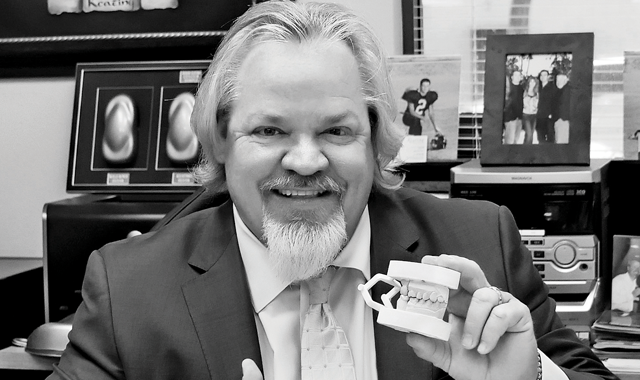What the digital transition means for the dental team
Shaun Keating talks to Digital Esthetics about his efforts to take Keating Dental Arts from a traditional dental lab to a fully digital solution.

Over the past decade, dental professionals have watched their industry shift rapidly from traditional to digital. From chairside technology to lab-side digital design and manufactuering, digital tools have caused huge disruption in every workflow.
We were curious how that kind of seismic change plays out in labs that do production work each and every day, so we turned to a member of our Editorial Advisory Board, Shaun Keating, CDT and CEO of Keating Dental Arts in California. Here's what he told us:
The industry is changing really quickly from analog to digital. How did you make the change?
Keating: At Keating, we saw the writing on the wall early on as more and more of our doctors began requesting for us to accept digital files. From our start with Sirona/CEREC up to today, our manufacture partnerships and industry thought leaders have provided us with great information on current trends.
As more and more dental offices buy into digital technology, the need for the laboratory to transition into these systems is paramount. It is interesting that everyone has been talking about the digital solutions for several years, and only recently, with the price points of some of these systems coming down, have dentists become increasingly interested in getting into the game.
Basically, we work with all the systems at Keating. Open-architecture STL file formats are allowing us to work with 3Shape, Dental Wings and several other in-lab software’s to fulfill these digital work orders coming in from the scanners in the dental office.
11 ways to get great esthetics in your dental lab
How can labs keep their commitment to esthetics even as they go more digital?
Keating: I see labs trying to go the cheapest route on labor and getting it out so they can sell it for a cheap price, where we totally do the opposite. We’ve kept all our technicians, many of whom are Certified Dental Technicians. We really take pride in that. We’re cross-training them from ceramists that have been stacking from the ground up, to ceramists that provide contour and final stain/glaze to the product. They have the training and eye for detail; we just changed the material and process. All my PFM techs have now converted over to our Bruxer-type restorations. So it’s not about letting go your commitment to esthetics-it’s how to incorporate the materials effectively into the lab by training the team on the new process and procedures.
It seems like “going digital” makes people think they’re going to lose control to computers. How is that not the case?
Keating: I think it gives us more control. We have dentists working with us digitally. Digital doesn’t lie. We can get parameters on a crown, how it fits. We can add cement spacer for the dentist. We can wax things a little differently. I can go from 60 microns to 100 microns of gap space for cement. I can build connectors, the right 3x3 or 4x4 depending on where it’s at. I can build marginal ridges up to support within 2 mm. If I’m doing a stack-on type like a KDZ Ultra, I can build my ZR substrates exactly where I want support in the software.
Related: What dentists REALLY want labs to know
It’s much more consistent and accurate by going digital. Yet with all of us here at Keating, we’ve got that aspect that we love but we also keep improving on how we interact with the doctors personally. We still have all the people on the phones. We still have every case that a doctor can call on and go over it hand-by-hand with us and we can program or we can do it by hand.
How can these new tools be used more effectively to maintain desired esthetics?
Keating: No one likes change. There are still people in my laboratory that are fighting it a little bit, but they’re kind of dinosaurs and they like their ways-but they’re seeing the writing on the wall. As more and more crowns go into this digital format and less is being done by hand, they have to adapt and change or retire. A lot of my people don’t want to retire. It’s a happy place to work here. They like working here but we have to give them all the tools we can to help teach them and not just throw them in blindly. We want to get the best educators here, to help us with the change.
Must-read: 7 ways to make your lab a successful business
Every other week we have someone in here trying to help us improve on our technology. You’re always going to have to be on that cutting edge of learning and accepting that change is good. That’s the way it’s going in digital dentistry.
Oral Health Pavilion at HLTH 2024 Highlighted Links Between Dental and General Health
November 4th 2024At HLTH 2024, CareQuest, Colgate-Palmolive, Henry Schein, and PDS Health launched an Oral Health Pavilion to showcase how integrating oral and general health can improve patient outcomes and reduce costs.
Product Bites – January 19, 2024
January 19th 2024Product Bites makes sure you don't miss the next innovation for your practice. This week's Product Bites podcast features new launches from Adravision, Formlabs, Owandy Radiology, Henry Schein Orthodontics, Dental Creations, and Dental Blue Box. [5 Minutes]
Product Bites – December 22, 2023
December 22nd 2023The weekly new products podcast from Dental Products Report is back. With a quick look at all of the newest dental product launches, Product Bites makes sure you don't miss the next innovation for your practice. This week's Product Bites podcast features updated software from Medit. [2 Minutes]